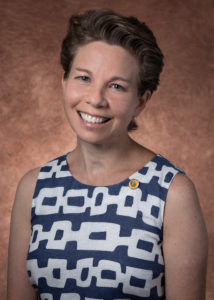Written by: Gretchen Alexander, MD
In 1903, one of the earliest descriptions of medical burnout was penned by William Osler, then a fifty-five year old professor of medicine at Johns Hopkins University: “In spite of the most careful regulation of my time and health, I was often utterly ‘used up’ at the end of the week and the question was how long could I hold out at the high pressure.” (1)
At the time, Dr. Osler was seeing up to 50 patients a day and the annual income from his general internal medicine practice has been estimated at $700,000-$900,000 in 2018 dollars–tax free. (2) Offered the prestigious and undemanding Regius medical professorship at Oxford University, he hesitated to accept until his wife bluntly urged, “Do not procrastinate, accept without delay. Better go in a steamer than a pine-box.”(3) Osler accepted the position and spent the remaining twenty-four years of his life writing, lecturing and entertaining visitors to his country estate in Oxford, “The Open Arms”.
Today’s medical landscape is strikingly different from that of 1903; particularly in terms of compensation for primary care providers—although with respect to patient caseloads, not much appears to have changed.
Unsurprisingly, physician burnout is more prevalent today than in 1903. Most recent available data suggests burnout rates in our profession range from 28% (public health and preventive medicine) to 54% (urology) with an average rate of 44% across all specialties. (4)
Although the impact on individual physicians is severe, with suicide rates in our profession exceeding those in the general population, (particularly for female physicians), the impact on patients and healthcare systems is also significant. Physician burnout correlates positively with medical errors, decreased patient satisfaction, increased malpractice rates and perhaps even delayed recovery rates and decreased patient adherence to treatment. (5)
The causes of physician burnout are well-described, and the solutions are known. Physicians consistently identify excessive administrative work, insufficient time for patient encounters, long hours, poorly designed EHR products and inefficient practice environments as factors in burnout creation. Solutions have been suggested by the AMA; increased protected time for administrative work, midlevel support for non-clinical tasks such as in basket management, leveraged use of medical assistants and LPNs to improve workflow, and improved call management. (6)
However, the adoption of these known solutions has been slow. Physician wellness initiatives tend to focus on granular measurement of physician wellness, and, tediously, exhortations for improved physician self-care through meditation and exercise.
This is puzzling, given extensive evidence that physician wellness will improve when the healthcare system’s efficiency and efficacy improve.
What appears to be missing is recognition of the fact that physician burnout is a symptom of poor business practices.
Systems that operate inefficiently are inherently less profitable. In healthcare, loss of profitability tends to be remedied through demands for increased physician productivity, leading to even greater burnout among already frustrated physicians.
However, from a business standpoint, the appropriate solution for inefficient systems is improved practice management, not increased patient throughput. Systems that operate efficiently are more profitable, provide safer care, and lead organically to improved physician wellness as a secondary benefit.
What can we as physicians do to advocate for effective practice management?
- We can recognize if the ancillary staff is well managed or not. Good management skills are not taught in medical school, unfortunately, but a basic understanding of them is not hard to obtain through readable books such as Working with Difficult People. If we are able to recognize good managers, we can hire them, support them and make sure we keep them on board in our systems.
- We can become familiar enough with billing and coding to recognize when it is being executed effectively enough to maximize practice revenue. When a practice bills ineffectively, the lost revenue results in increased pressure on physicians to increase throughput. Less time with our patients affects our relationships with them and the safety of their care. We should expect practice managers to be able to ensure coding and billing functions that maximize our productivity and support safe care practices. Well-managed practices can generate ample revenue with clinicians seeing 16 patients per day. Statements that the practice can only survive if a clinician sees 25-30 patients a day should be examined carefully.
- We can understand that efficient systems are essential if we are to care for patients effectively. Even if an unnecessary task takes only two minutes, it will not only distract from patient care but will result in significant lost time over the course of the day if it must be repeated many times. We should feel confident it is not petty to request that inefficiencies be addressed because they are a drag on physician productivity and patient safety.
Ultimately, we need to have a firmer conviction that tools to improve operational efficiency are not luxuries for the benefit of physician wellness—they are a necessary part of any well-run business enterprise.
About the Author
 Gretchen B. Alexander, M.D., is a community psychiatrist working with the severely mentally ill in the public mental health system in Maricopa County. She is a Clinical Associate Professor of Psychiatry at the University of Arizona College of Medicine-Phoenix. She is a graduate of the Perelman School of Medicine at the University of Pennsylvania and completed her residency in psychiatry at Long Island Jewish Medical Center, where she was also Chief Resident in Psychiatry. She is past President of the Arizona Medical Association and the Arizona Psychiatric Society. She is currently chair of the Legislative Committee of the Arizona Psychiatric Society and a member of ArMA’s Legislative and Governmental Affairs and Finance Committees and a member of the ArMPAC Board of Directors.
Gretchen B. Alexander, M.D., is a community psychiatrist working with the severely mentally ill in the public mental health system in Maricopa County. She is a Clinical Associate Professor of Psychiatry at the University of Arizona College of Medicine-Phoenix. She is a graduate of the Perelman School of Medicine at the University of Pennsylvania and completed her residency in psychiatry at Long Island Jewish Medical Center, where she was also Chief Resident in Psychiatry. She is past President of the Arizona Medical Association and the Arizona Psychiatric Society. She is currently chair of the Legislative Committee of the Arizona Psychiatric Society and a member of ArMA’s Legislative and Governmental Affairs and Finance Committees and a member of the ArMPAC Board of Directors.
References:
- Osler: Inspirations from a Great Physician, Charles S. Bryan Oxford University Press, 1997. p. 149
- Caring carefully: Sir William Osler on the issue of competence vs compassion in medicine. Bryan, CS. BUMC Proceedings 1999;12:277-284
- The Quotable Osler. Silverman, Murray, Bryan. American College of Physicians, 2008. xxii
- https://www.ama-assn.org/practice-management/physician-health/physician-burnout-which-medical-specialties-feel-most-stress
- Physician burnout: contributors, consequences and solutions. West CP, Dyrbye LN, Shanafelt TD.J Intern Med.2018 Jun; 283 (6):516-529
- https://www.ama-assn.org/practice-management/physician-health/these-4-workflow-changes-help-cut-burnout-45





